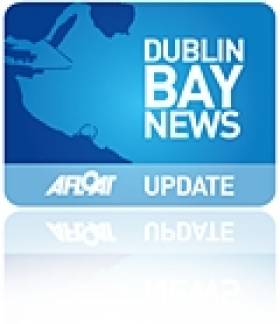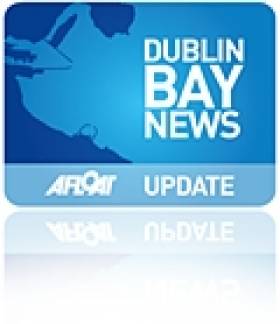Displaying items by tag: Portsmouth yardstick
RYA Calls for Portsmouth Yardstick Submissions
The RYA is calling on clubs to help make 2021 one of the biggest and best years for Portsmouth Yardstick handicap data to ensure numbers are as accurate as possible for 2022.
The Portsmouth Yardstick handicap system is run jointly by the RYA and its affiliated clubs to allow sailors to race different boats against each other fairly.
At the end of each year, clubs submit their results data to the RYA which collates and analyses it then adjusts PY numbers accordingly. The more data received, the more accurate the PY numbers will be.
Due to a lack of racing in 2020 due to Covid-19 restrictions, PY numbers stayed the same for 2021 – but it’s hoped that an influx of submissions this year will allow for the numbers to be updated.
This year’s deadline for PY submissions is December 20.
Adam Parry, technical manager at the RYA, said: “As we approach the 70th anniversary of the Portsmouth Yardstick scheme it would be great if this year was one of our largest returns showing how strong our clubs and classes are after a turbulent 2020.
“Understandably there was far less racing in 2020 which lead us to our decision to freeze the PY numbers for a year but we are hoping that this year we can have enough data to help update numbers and help clubs create fairer racing for their members”.
Club handicap and results officers can submit their data online here
Royal Cork Yacht Club will run its fourth edition of the Horizon Energy Group sponsored PY1000 river race on March 25th.
The Portsmouth Yardstick handicap dinghy race takes place on the Owenabue river in Crosshaven Cork, in front of the Royal Cork Yacht Club with a 1430 first gun.
'We already have a large number of entries from many different boats like RS400 & 200, Laser, GP14, Topper, Mirror, National 18 (Ultra, Ultimate and Classic) just to name few', says Royal Cork Rear Admiral, Kieran O'Connell.
In the last three years a vareity of different dinghy designs took home the title: 2014 RS400, 2015 Laser full Rig, 2016 Laser full Rig.
The race will have a prize pool of €1000 with a minimum guaranteed €700 going to first place. The Notice of race is downloadable below.
Big PY Dinghy Fleet on a Chilly Day for DMYC Frostbite
#pyfleet – The PY fleet turned out in good numbers for yesterday's DMYC frostbite series and despite the weather had a great day's racing after all writes Hugh Sheehy. Cold water temperatures and winds gusting from 10 knots to 28 knots led to some conservative sailing, but the racing was still pretty full on.
At the end the result continued the recent strong run by the Finns, with Richard Tate leading the way home from Long and Hamilton in the IDRA14s.
Tate started with the main group down at the pin while Des Fortune's Finn timed a gust right and got a big right shift off the boat end right at the gun. Fortune's boat was clearly ahead at the first mark with Tate and Long chasing hard back in from the left. It was PUFFY under the weather mark.
Careful sailing was the order of business down the run with booms not let too far out and some spinnakers not-flying. Tate and Fortune's Finns started to pull clear on the 2nd beat before Fortune's boat retired leaving Tate to sail out to victory. A nice win, although not by a big margin, with Long only 20 seconds behind on corrected time. And although Hamilton was a full two minutes further back he only had ten seconds over Tom Murphy in the K1.
The most notable result was the one second difference between Devaney and Lordan in 5th and 6th. Tight times!
PY and Laser fleets each had 13 boats on the water, with the RS and Fireball fleets disappointed to see only 5 boats in each class. But it was a good day.
A good day! And a good day to have a good wetsuit too!
Will Portsmouth Yardstick Dinghy Class Be Reinstated at Volvo Dun Laoghaire Regatta?
#dlregatta –The race is on to muster a viable handicap dinghy class after Volvo Dun Laoghaire Regatta dropped its Portsmouth Yardstick (PY) dinghy class start from July's biennial event on Dublin Bay.
The organisers say they are limited by resources and personnel but hold out hope that the class could be reinstated if they 'receive written entries from eight compatible dinghies (on block) to the regatta secretary'.
Mixed dinghy sailors argue the decision to drop the class for the 2015 is 'a most disappointing outcome'.
Ireland's biggest regatta is expected to have over 500 entries this year.
Organisers say that 'due to a request from the Laser Standard Rigs to have their own start, the low number of other PY entries during previous regattas, and the large number of other classes to be catered for, it has been decided not to give a PY start in 2015.
'It does seem an odd decision, particularly in a context where sailing is trying to be more inclusive and trying to get people into the sport. Mixed Dinghies is a great way of doing this' PY sailor Hugh Sheehy told Afloat.ie.
Among others, the 'Sailing In Dublin Club' has backed up Sheehy's plea for reinstatement: 'As our members are regular entrants to the Dun Laoghaire Regatta, we would like the PY start to be reinstated. Why not be as inclusive as possible to encourage dinghy sailing in Dun Laoghaire?'
DMYC PY Fleet Is Dead Heat at the Top
#dmyc – With only ten boats on the water there was a little more room than usual on the start line in Race 1, which Sheehy's OK Dinghy took advantage of with a clean pin end start, tacking and crossing the fleet. Half way up the first beat the lead had gone. Results for both races are downloadable below.
Pierre Long had picked a good left shift and was coming across on port in his IDRA14. He had caught right up but only saw the now starboard tack OK Dinghy at the last moment. A slam tack resulted in an extremely unwanted capsize, mere minutes after the start. Ouch.
Frank Hamilton took advantage and sailed out to another race win with Des Fortune's Finn - ably sailed by Colin Galavan - only 40 seconds behind in 2nd. With discards kicking in the Finn and Hamilton's IDRA14 ended the race 1st and 2nd, and joint first overall. Meantime Long had righted the capsized IDRA and fought back to finish 7th!
In Race 2 the start was marred by a windward/leeward between Long's IDRA and Sheehy's OK Dinghy in the seconds before the gun. The OK Dinghy's protest will be heard next week. McCarthy won the start this time, with another clean tack and cross just after the gun showing excellent timing.
In the race itself, McCarthy's Solo sailed off to a solid win, with Galavan taking Des Fortune's Finn to another second place. Long was 3rd (pending protest) with Hamilton unusually far back in 4th.
As in the Laser race there were gains in the corners - but big losses too. In race 1 Hamilton threaded his way through every shift correctly and was clearly the fastest boat out there. In race 2 McCarthy did the same, avoiding big losses and sailing fast and clean to the win.

























